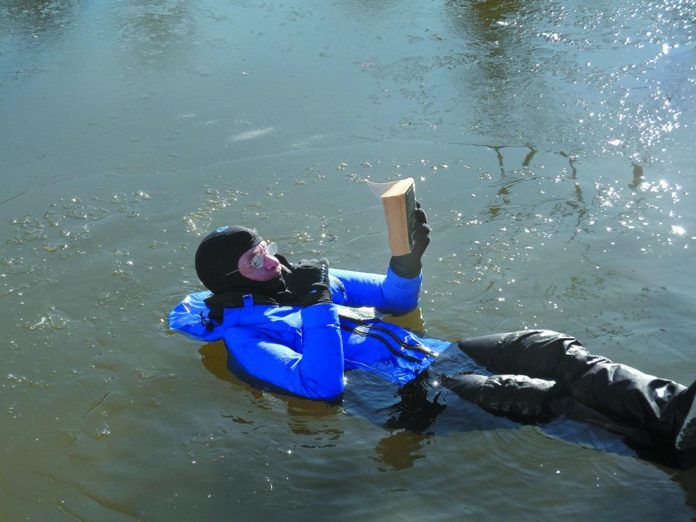Should you find yourself cast into icy water, there are few things you can do that may help.
Acclimatize. As a year round kayaker and small boat sailor, Ive fallen in cold water countless times, and I was always dressed for the water. According to research, it is also important that I get use to the water by immersing myself in stages with the approach of fall. Sure, this process was particularly cold in the face, but by winter it was not a true shock. Alternatively, get a wet suit and do your own in-water work. Research has shown that getting your face in cold water just a few times each season may make all the difference.
Should you fall in, focus on doing the right things in the critical first minutes:
- Take a deep breath and focus hard on not gasping.
- When you get to the surface, focus on floating and stabilizing your breathing. You are not going to be able to swim or do anything productive for several minutes, and as a cold water overboard victim, there is nothing you need to do for a minute or two. Focus on not drowning. If you have a PFD that will be a huge help. If not, try to tread water with as little effort as possible. Calm down and realize you have some time.
- Once your breathing has returned to normal, try to reach any flag buoy or floating objects pitched in the water by the crew. Tighten up every zipper and flap on your foul weather gear and curl up in a fetal position to conserve heat. If you are alone or on a small boat that has capsized, make a clear-headed decision about what to do next and do it. If help is likely or you don’t have a PFD, stay with the boat. If shore is nearby and no one is coming, it can make sense to strike out before the cold gets to you, but watch your pacing.
For more on surviving in cold water, see the previous blog post on this topic: “Cold Water Survival.” Among the resources available in that blog post is an informative 10-minute video on cold water survival based on a program developed by Dr. Gordon Giesbrecht (Professor Popsicle), a professor of thermophysiology at the University of Manitoba in Winnipeg, Canada.
The upcoming March 2019 issue of Practical Sailor offers a more detailed look at cold water survival equipment and strategies.



































